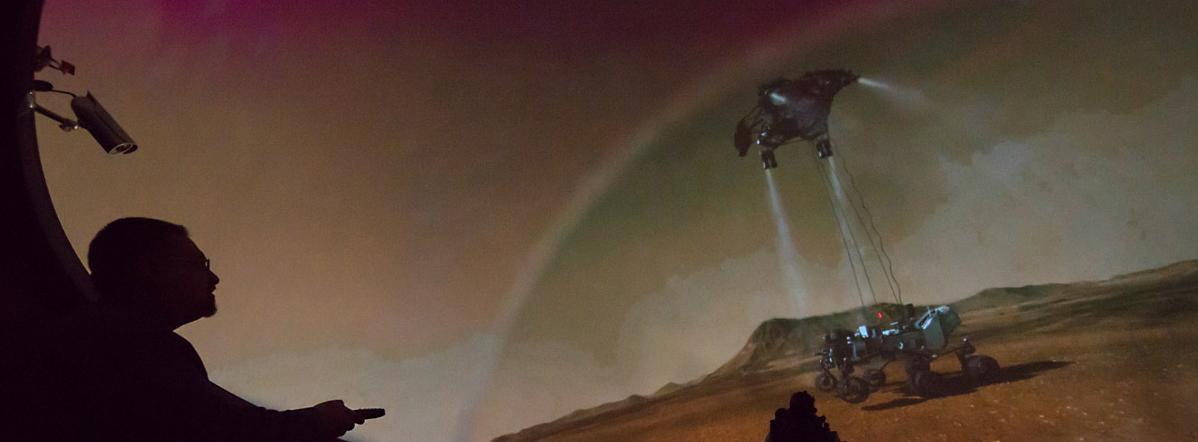
TEACHERS: Please review our NEW VA SOLs show information guide for help in selecting a program for your class!
Click on the name of the show you'd like to learn more about!
A - E
- Ancient Skies
- A Part of the Sky Called Orion
- A Teenager's Guide to the Galaxy
- Back to the Moon For Good
- Black Holes: The Other Side of Infinity
- The Case of the Disappearing Planet
- Chasing the Ghost Particle Poster
- Comets and Discovery
- Cosmic Castaways
- Cosmic Origins Spectrograph
- DARK: Understanding Dark Matter
- Dawn Of The Space Age
- Did An Asteroid Really Kill the Dinosaurs?
- Dynamic Earth
- Earth, Moon and Sun
- Edge of Darkness
- Exoplanets: Worlds of Wonder
F - Or
- The First Stargazers
- Flight Adventures
- From Earth to the Universe
- The Hot and Energetic Universe
- IBEX
- Ice Worlds
- The Incredible Sun
- In Search of Our Cosmic Origins: The ALMA Planetarium Show
- Legends of the Night Sky: Orion
- Legends of the Night Sky: Perseus and Andromeda
- Magic Tree House: Space Mission
- The Making of a Star and Her Entourage
- Microcosm: The Adventure Within
- Molecularium
- Mystery of the Christmas Star
- One World, One Sky: Big Bird's Adventure
- Origins of Life
Os - Z
- Out There: The Quest for ExtraSolar Worlds
- Phantom of the Universe
- Planetary Visions
- Polaris: The Space Submarine and the Mystery of the Polar Night
- Red Planet Rising
- Rosetta
- Secrets of the Sun
- Seeing! A Photon's Journey Across Space, Time, and Mind
- Seven Wonders
- Stars of the Pharaohs
- Sunstruck: Exploring the Sun
- This is Our Sky
- To Space and Back
- Two Small Pieces of Glass
- Universe
- Wayfinders: Waves, Winds, & Stars
- Wonders of the Universe
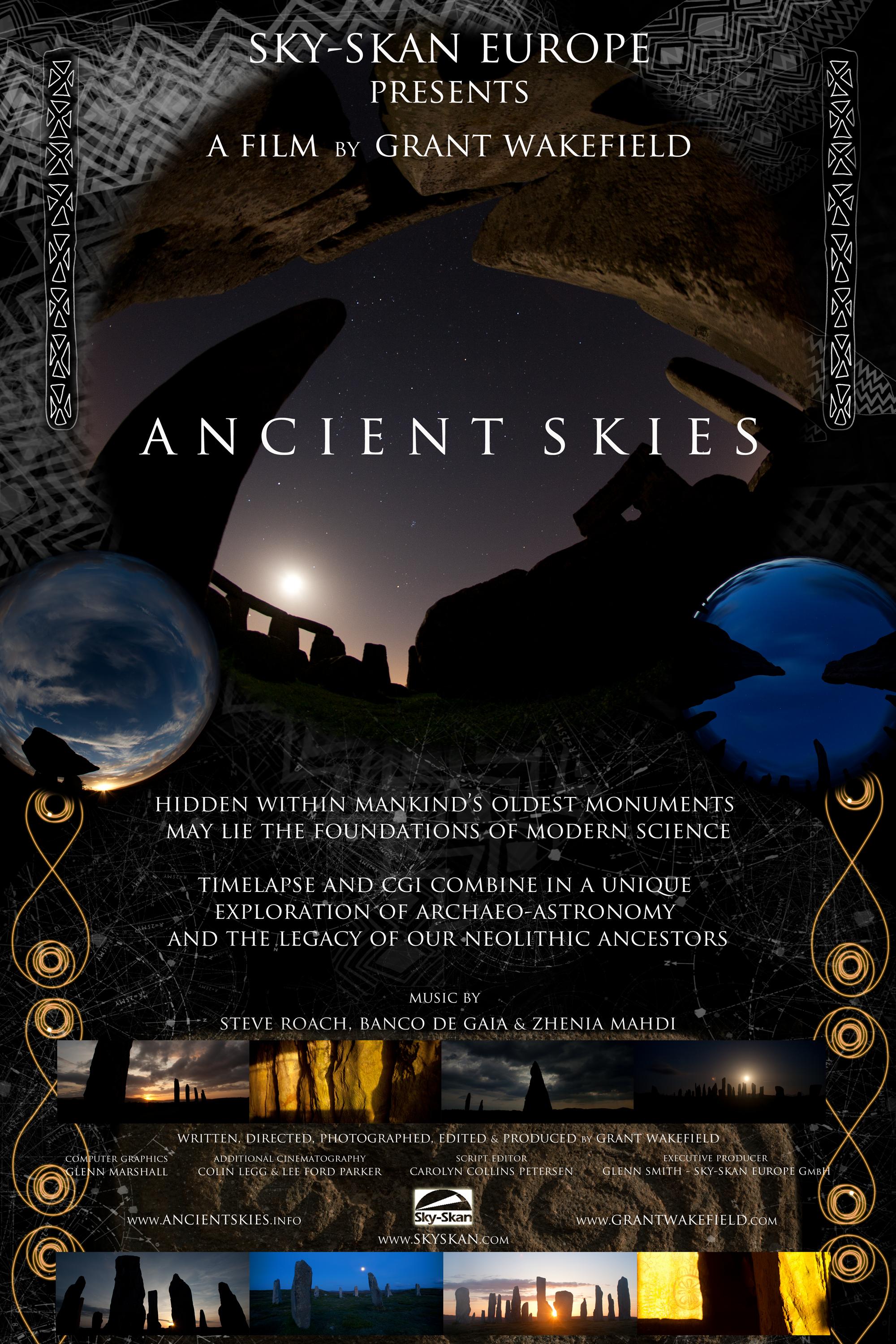
For thousands of years the Neolithic civilization of Europe constructed ever more complex stone monuments. Initially dismissed as “illiterate barbarians,” only recently has a radical reappraisal taken place, giving birth to the new science of Archaeo-Astronomy. Far from being “savages” the Neolithic were highly intelligent, integrating a spiritual world view with extraordinarily skilled feats of engineering and astronomy, laying the foundations of modern science.
Ancient Skies features time lapse, CGI, never-before-seen alignment events, and interviews with the some of the most respected academics in the field to explore this fascinating subject and the enduring popularity of the legacy of our ancestors. View Trailer
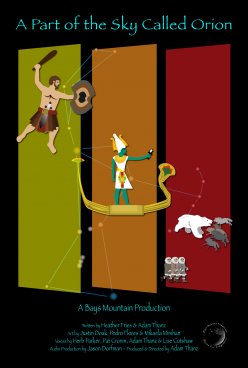
The show looks at the big ideas that have guided human understanding of the cosmos and its patterns in the sky.
A Part of the Sky Called Orion tells about the Greek, Egyptian, and Inupiaq cultures. We learn how each viewed the same stars, but had different stories and images. Told in first-person in the context of the teller’s life, we experience their ancient star lore and imagery. View Trailer
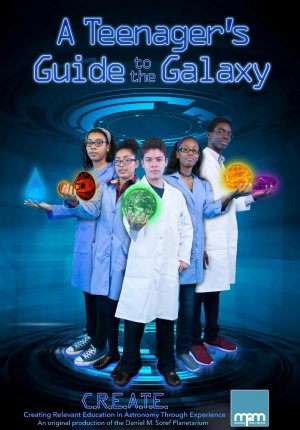
Created and hosted by cosmically curious teenagers from urban Milwaukee schools, this unique cosmic experience will take you on a dynamic journey across the universe and through time.
Explore the origins and fate of the universe, black holes and our Sun. Witness stunning full dome animations video scripted, story boarded and narrated by our inspiring young adults.
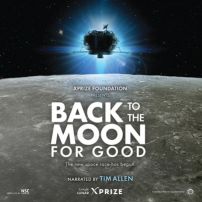
Immerse yourself in a race to the Moon 40 years after the historic Apollo landings. Learn about the history of lunar exploration, and the Moon’s resources. Discover what humanity’s future on the Moon might hold. See how a competition among privately funded international teams is ushering in a new era of lunar exploration. Narrated by Tim Allen, Back To The Moon For Good presents the Google Lunar XPRIZE, and the personal stories of competition and collaboration it inspires. (25 minutes)
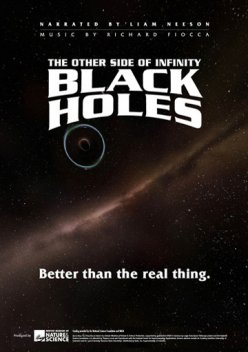
There's a place from which nothing escapes, not even light, where time and space literally come to end. It's at this point, inside this fantastic riddle, that black holes exert their sway over the cosmos ... and our imaginations. Zip through other-worldly wormholes, experience the creation of the Milky Way Galaxy, and witness the violent death of a star and subsequent birth of a black hole. Mathematical equations, cutting-edge science, and Einstein's theories fill in holes along the way, providing the most complete picture yet on this mysterious phenomenon. Can you feel the pull? (25 minutes) View Trailer
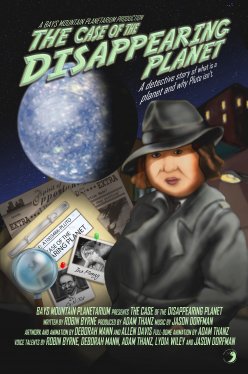
The Case of the Disappearing Planet looks into the changing status of objects we call "planets". It not only covers Pluto, but the temporary planetary status of asteroids as well. The tally of planets in our Solar System has been going up and down for hundreds of years! Have fun with this program as it features a sly, street-smart gumshoe called Skye Watcher. After a frenzied phone call from a 3rd grade teacher, she collects clues to find out what happened to Pluto. (25 minutes) View Trailer
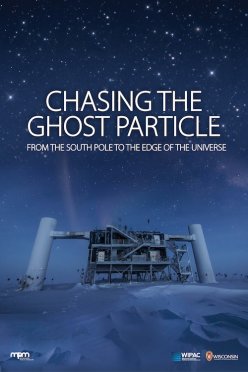
Deep in the ice at the heart of Antarctica, the biggest and strangest detector in the world waits for mysterious messengers from the cosmos. The detector is IceCube! The messengers are neutrinos -– ghostly particles that give us tantalizing looks into world of exploding stars and black holes. This show tells the incredible story of how an international team of scientists and engineers transformed one billion tons of Antarctic ice into a telescope. Building IceCube was a titanic endeavor driven by our human passion for discovery. Audiences will witness stunning views of the South Pole, captivating animations of the IceCube detectors capturing a neutrino collision–and eye-catching views of the cosmos. Chasing the Ghost Particle: From the South Pole to the Edge of the Universe will take you on a journey you will never forget. (25 minutes) View Trailer
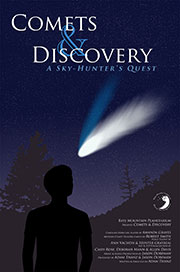
The show takes the viewer on a journey of discovery. We follow two intrepid comet hunters in first-person: one, a modern explorer, the other, Caroline Herschel, the famous 18th century comet huntress that ruled the skies for many generations. With both, we learn how they each searched the skies, made their discoveries, and reported them for other astronomers to bear out. We also learn about what people thought comets were and their importance to them. (20 minutes) View Trailer
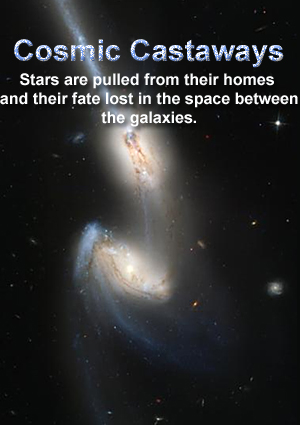
There are places where the night sky has no constellations. No Orion, no Big Dipper, nothing but a few lonely, far away stars and a few faint, ghostly patches of light. Most stars lie within the crowded boundaries of galaxies, travelling with their brothers and sisters in a vast galactic family. But some find themselves on their own, deep within voids between the galaxies. These are the cosmic castaways. View Trailer
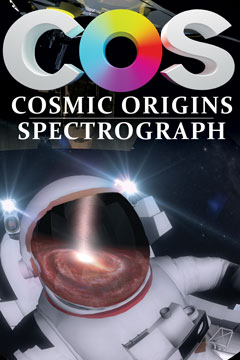
Cosmic Origins Spectrograph is a 28-minute fulldome look at the Cosmic Origins Spectrograph instrument installed on the Hubble Space Telescope in 2009 during Servicing Mission 4, as well as the science behind its utility.
The show covers the basics of spectroscopy at a high level, and touches on the processing of galactic and extragalactic gas. Other topics include the use of quasars as background light sources, cosmic evolution, and the development of large scale structure. (28 minutes) View Trailer
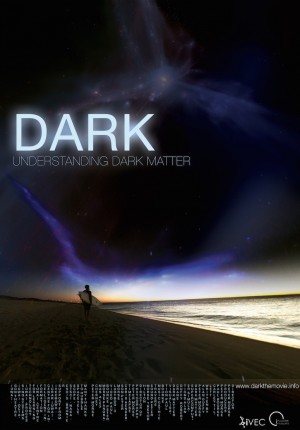
DARK: Understanding Dark Matter is a fulldome movie that explains and explores the nature of dark matter, the missing 80% of the mass of the Universe.
The search for dark matter is the most pressing astrophysical problem of our time – the solution to which will help us understand why the Universe is as it is, where it came from, and how it has evolved over billions of years – the unimaginable depths of deep time, of which a human life is but a flickering instant. But in that instant, we can grasp its immensity and, through science, we can attempt to understand it. (20 minutes) View Trailer
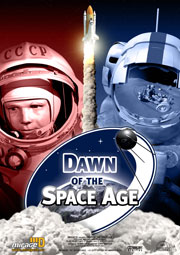
Re-live the excitement of the early days of space exploration, from the launch of the first artificial satellite Sputnik, to the magnificent lunar landings and privately operated space flights. Be immersed and overwhelmed with this most accurate historic reconstruction of man's first steps into space. Who were the men and women who took part in these death-defying days? Witness their drive, their passion, and their perseverance to explore in Dawn of the Space Age. (30 minutes) View Trailer
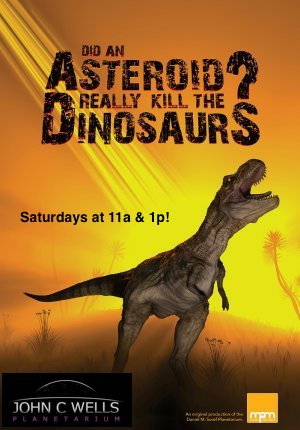
Did a space rock six miles wide slam into the Earth 66 million years ago and wipe out 75 percent of all living species at that time, including the dinosaurs? Explore this impacts and cosmic collisions across the Solar System in this dynamic new show. Includes footage from the first iridium layer found in Gubbio, Italy.
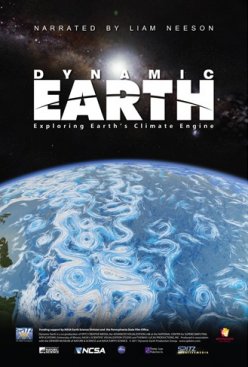
Dynamic Earth explores the inner workings of Earth’s great life support system: the global climate. With visualizations based on satellite monitoring data and advanced supercomputer simulations, this cutting-edge production follows a trail of energy that flows from the Sun into the interlocking systems that shape our climate: the atmosphere, oceans, and the biosphere.
Audiences will ride along on swirling ocean and wind currents, dive into the heart of a monster hurricane, come face-to-face with sharks and gigantic whales, and fly into roiling volcanoes. (30 minutes) View Trailer
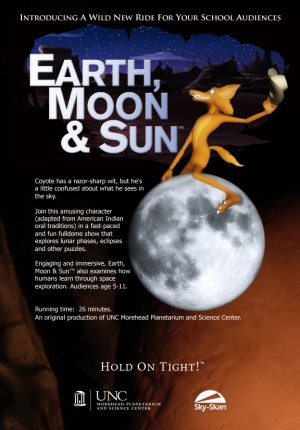
This planetarium show explores the relationship between the Earth, Moon and Sun with the help of Coyote, an amusing character adapted from Native American oral traditions who has many misconceptions about our home planet and its most familiar neighbors.
His confusion about the universe makes viewers think about how the Earth, Moon and Sun work together as a system. Native American stories are used throughout the show to help distinguish between myths and science. (35 minutes) View Trailer
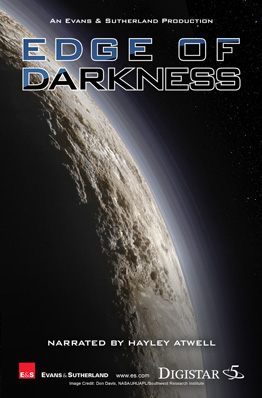
Edge of Darkness features amazing scenes of places never before seen gathered by key space missions that culminated with groundbreaking discoveries in 2015. It features a spectacular flight though the great cliffs on comet 67P, a close look at the fascinating bright "lights" on Ceres, and the first ever close ups of dwarf binary planet Pluto/Charon and its moons. Narrated by Hayley Atwell, Agent Carter, from the Marvel Cinematic Universe and the ABC television series. (30 minutes) View Trailer
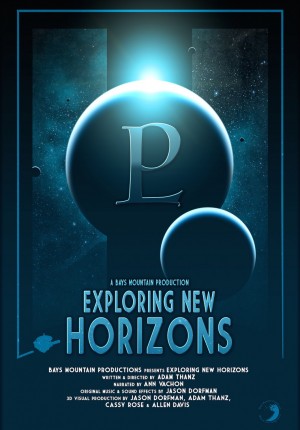
Exploring New Horizons explores the New Horizons spacecraft and its mission to dwarf planet Pluto and other Kuiper Belt Objects. The show also exhibits the importance of the scientific method and how it applies to our understanding of the Solar System. Starting from ancient times, learn about the history of planetary discovery, especially that of Pluto, and how it has led to an amazing mission to explore the Kuiper Belt. (25 minutes) View Trailer
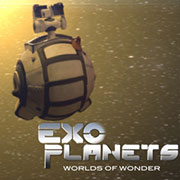
Using the latest data from multiple planet-hunting missions including Kepler, ExoPlanets: Worlds Of Wonder follows Mankind's first Space Probe as it journeys outside our solar system to the many new worlds astronomers are discovering beyond. Audiences will explore Gas Giant planets caught in a deadly dance with their host stars, frozen Rogue planets hurling through space, molten rocky worlds now known to science and new planets orbiting within the Goldilocks Zone, the habitable region around a star where Earth-like worlds may exist. (25 minutes) View Trailer
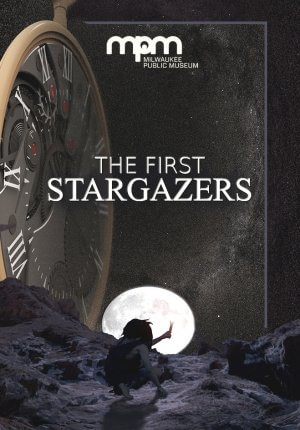
Journey back in time to explore how the first stargazers experienced the sky above. Your guide is Nashira, a friendly time traveler who has visited Earth many times before. Witness the very first stargazer making a Moon calendar out of animal bone 30,000 years ago. Discover the ancient pyramids of Giza and their alignment to the skies. See stunning digital re-creations of the Parthenon, Alexandria Library, Stonehenge and Abu Simbel Temple and be inspired by the first stargazers who laid down the foundations of modern-day astronomy.
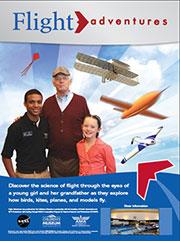
Dreams of flying, model aircraft and a young girl and her grandfather come together in this multi-media planetarium show about the science of aeronautics. Learn about famous inventors and aviators of the past and the pioneers who first revealed the 4 forces of flight. See images of aircraft past, present and future and imagine where flight might take us. (22 minutes) View Trailer
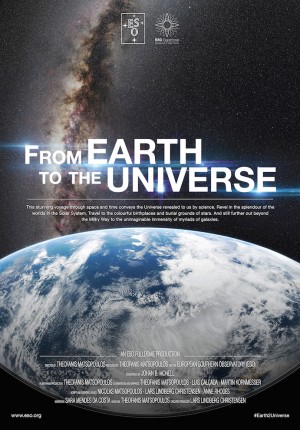
The night sky, both beautiful and mysterious, has been the subject of campfire stories, ancient myths and awe for as long as there have been people. A desire to comprehend the Universe may well be humanity’s oldest shared intellectual experience. Yet only recently have we truly begun to grasp our place in the vast cosmos. To learn about this journey of celestial discovery, from the theories of the ancient Greek astronomers to today’s grandest telescopes, we invite you to experience From Earth to the Universe. This stunning, 30-minute voyage through space and time conveys, through sparkling sights and sounds, the Universe revealed to us by science. Viewers can revel in the splendour of the worlds in the Solar System and our scorching Sun. From Earth to the Universe takes the audience out to the colourful birthplaces and burial grounds of stars, and still further out beyond the Milky Way to the unimaginable immensity of a myriad galaxies. Along the way, the audience will learn about the history of astronomy, the invention of the telescope, and today’s giant telescopes that allow us to probe ever deeper into the Universe. (30 minutes) View Trailer
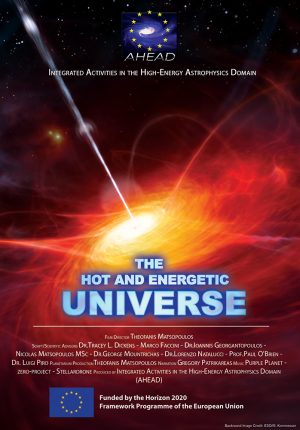
The Hot and Energetic Universe presents with the use of immersive visualizations and real images the achievements of the modern astronomy, the most advanced terrestrial and orbital observatories, the basic principles electromagnetic radiation and the natural phenomena related to the High Energy Astrophysics. These radiations reveal the processes in the hot and violent Universe. This science also probes hot gas in clusters of galaxies, which are the most massive objects in the Universe. It also probes hot gas accreting around supermassive black holes in the centers of galaxies. Finally, high energy radiation provides important information about our own Galaxy, neutron stars, supernova remnants and stars like our Sun which emit copious amounts of high energy radiation.
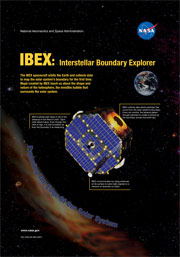
Discover how scientists and engineers are using cutting-edge technology to explore the boundary between our solar system and the rest of our galaxy. Learn how the IBEX mission was developed, how the spacecraft was created and how IBEX is collecting high-speed atoms to create a map of our solar system’s boundary in this engaging planetarium show narrated by two inquisitive teenagers and the IBEX scientists and engineers themselves. (28 minutes) View Trailer
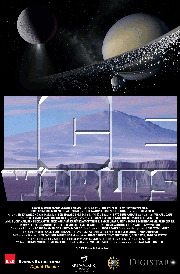
The delicate balance between ice, water and the existence of life has been a topic of exploration and discovery in science for generations. In travels to the Arctic and Antarctic regions of our planet, we'll examine the ecosystems that live and thrive there and see how their survival is connected with our own. Beyond Earth, we'll see how the existence of ice shapes the landscape and the natural systems on other planets and moons in our solar system. (30 minutes) View Trailer
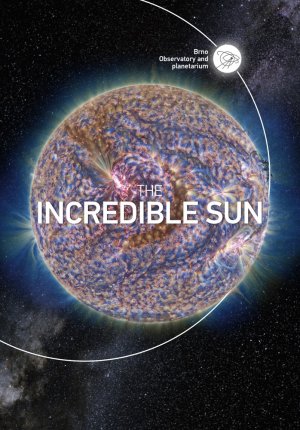
Every second the Sun emits million times more energy than the world consumes every year. Where does such a huge amount of power come from? Discover our star through the breathtaking timelapses. Thanks to the real images taken by the Solar Dynamics Observatory and processed by advanced mathematical methods, you will experience the true nature of the Sun and find out that it is far from being as calm as it seems at first glance. The Sun’s activity, pronounced by terrific solar flares, sunspots and coronal mass ejections, influences our planet, by producing impressive auroras but also by damaging distribution networks and communication satellites. Is it a threat to us, then?
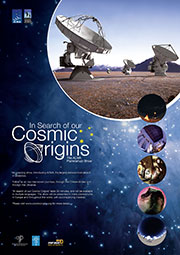
In Search of Our Cosmic Origins: The ALMA Planetarium Show is a popular scientific show, appealing to a wide audience. In it, you will follow our guide, Ariane, on two interwoven journeys, through the Chilean Andes and through the Universe. The show is beautifully presented, with amazing astronomical images and extremely realistic 3D computer renderings. (30 minutes)
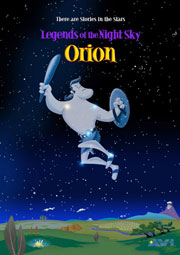
Legends of the Night Sky: Orion is the world's first traditionally animated full dome movie. Legends takes a fun-filled and imaginative look at the stories and legends about Orion, the great hunter of the winter sky. This is an ideal show for family audiences and younger viewers. Greek mythology will never seem the same once you've seen all this production from AudioVisual and Spitz Creative Media. (24 minutes)
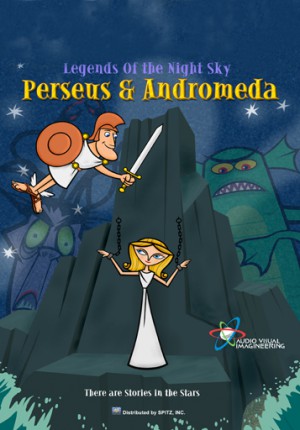
Legends of the Night Sky: Perseus and Andromeda is a fun-filled retelling of the tale of the beautiful but unfortunate princess Andromeda, who in divine punishment for her mother’s bragging, is sacrificed to a sea monster—and rescued by the Greek hero Perseus. Greek mythology will never seem the same once you've seen all this production from AudioVisual and Spitz Creative Media. (20 minutes) View Trailer
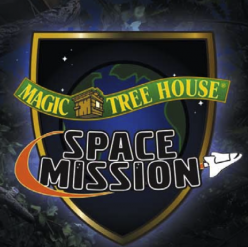
Travel with the brother-sister duo, Jack and Annie, in their Magic Tree House as they discover a note that asks them to answer a series of six questions about space. With the help of the astronomer, the Internet, an astronaut, books and the writer of the mysterious note, Jack and Annie are taken on a wondrous journey of adventure and learning. This exciting voyage will carry visitors to the planets and far out into the Universe where Jack and Annie nearly get… Well, we don’t want to give it away. The adventure is just beginning! (30 minutes) View Trailer
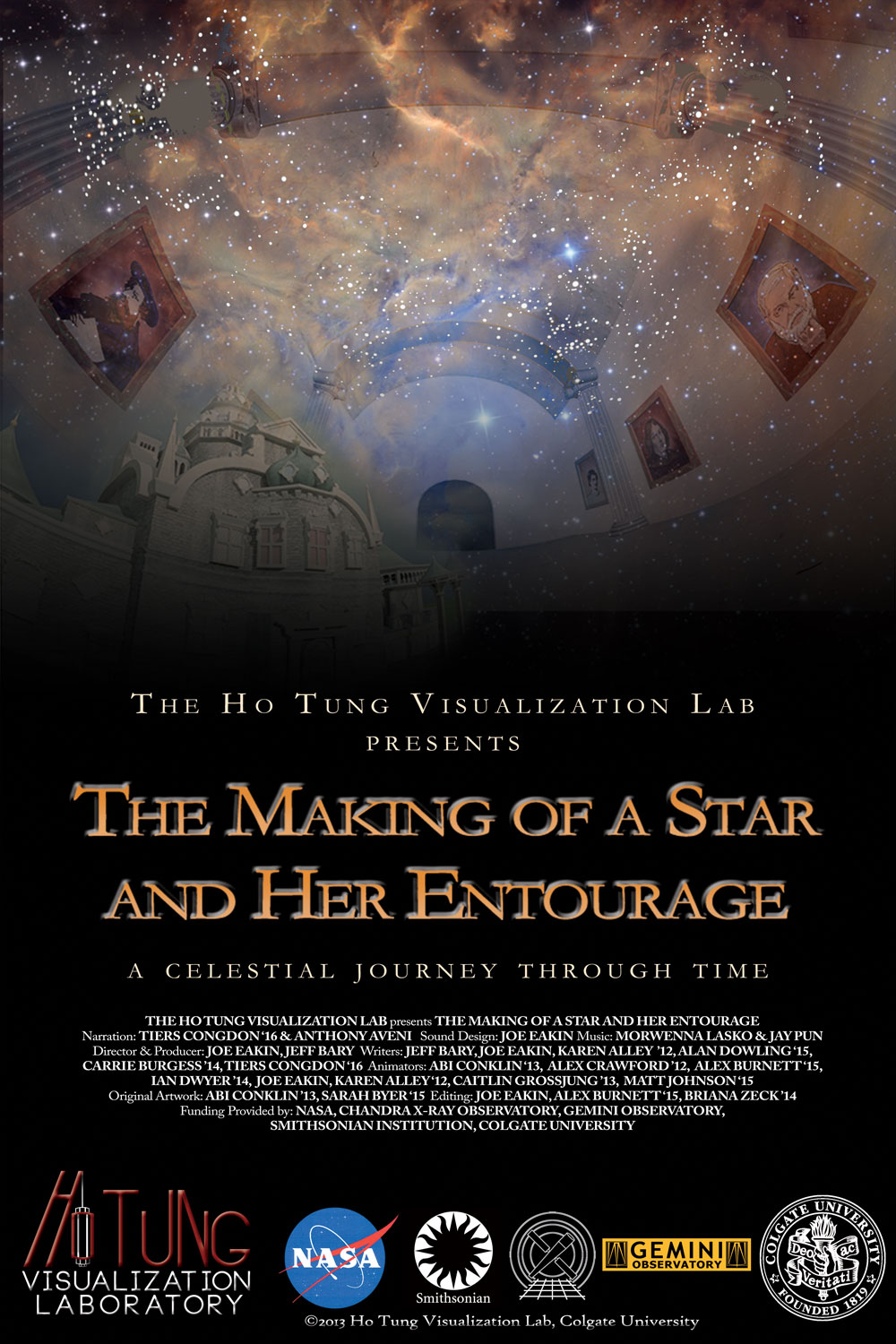
The Making of a Star and Her Entourage traces the evolution of humankind’s understanding of the universe. Discover the long journey beginning with the Earth-centered model of the universe in which the Sun was considered a planet to our current understanding that the Sun is a star centered in the Solar System and is one of billions that reside in the Milky Way. (30 minutes)
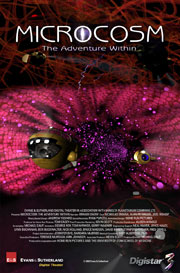
At the Center of Miniaturized Medicine in the year 2053, you'll shrink down to the size of a microbe and get injected into a patient who is suffering an infection from a mysterious virus. Produced in cooperation with the University of Utah Medical School, this high-speed immersive adventure is not only exciting, but educational as well. Traveling from the base of the eye to the interior of the heart, you'll explore exotic ports of call in CMM Probe Alpha with its robotic outboard scout vehicle. As you piece together the clues the virus has left behind, you'll race against time to save the patient on your roller-coaster ride through the body. Laser battles, genetic weapons, and lots of surprises along the way, make this a show audiences will want to experience again and again. (17 minutes) View Trailer
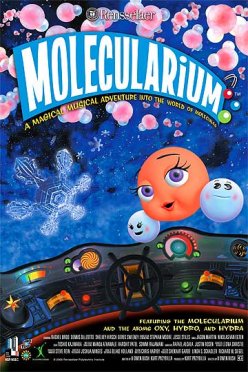
Rensselaer Polytechnic Institute's Molecularium is an exciting new animation, in a planetarium setting, created to spark interest in the atoms and molecules that constitute our world. Via pioneering digital dome technology, viewers are completely immersed in a captivating virtual world. (20 minutes) View Trailer
Produced by Evans & Sutherland Digital Theater, Mystery of the Christmas Star allows audiences to journey back 2000 years to Bethlehem in pursuit of a scientific explanation of the star the wise men followed to find the baby Jesus. This modern retelling of the Christmas story is sure to charm and captivate audiences of all ages. View Trailer
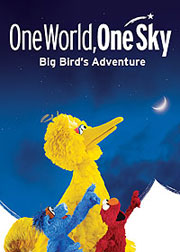
Follow Sesame Street's Big Bird and Elmo as they explore the night sky with Hu Hu Zhu, a Muppet from Zhima Jie, the Chinese co-production of Sesame Street. Together, they take an imaginary trip from Sesame Street to the moon, where they discover how different it is from Earth. (27 minutes)
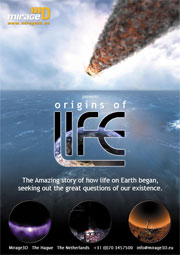
Starting with the Big Bang, in chronological order, the show deals with the prebiotic chemistry in the Universe, the formation of stars, formation of solar systems, and the first life on Earth. Furthermore Origins of Life covers the great extinctions as well as our search for (primitive) life beyond our planet. (30 minutes)
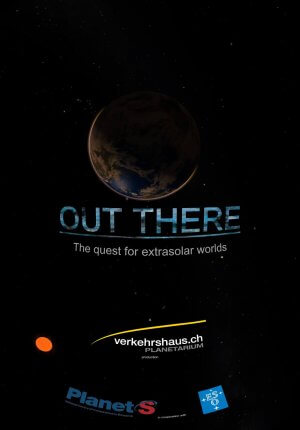
For thousands of years, mankind thought that the Earth was the centre of the Universe. Thanks to our curiosity, imagination and urge to explore, we now know that planets like our Earth are nothing special in the cosmos. The Sun is just one ordinary star among hundreds of billions in our galaxy, the Milky Way. With the world’s most powerful telescopes, we are able to explore more and more of the Universe. What we have found so far has surpassed even the wildest expectations of scientists as well as authors of science fiction. Most stars have planets — it turns out they are more common than we thought. A huge diversity of different worlds is out there, just waiting to be discovered.
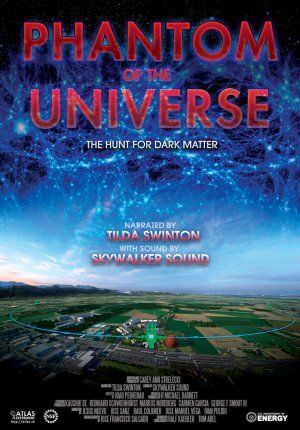
Phantom of the Universe is a new planetarium show that showcases an exciting exploration of dark matter, from the Big Bang to its anticipated discovery at the Large Hadron Collider. The show reveals the first hints of its existence through the eyes of Fritz Zwicky, the scientist who coined the term “dark matter.” It describes the astral choreography witnessed by Vera Rubin in the Andromeda galaxy and then plummets deep underground to see the most sensitive dark matter detector on Earth, housed in a former gold mine. From there, it journeys across space and time to the Large Hadron Collider at CERN, speeding alongside particles before they collide in visually stunning explosions of light and sound, while learning how scientists around the world are collaborating to track down the constituents of dark matter.
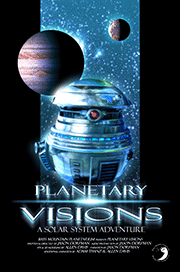
Planetary Visions is a fantastic, interactive program that is best described as an adventurous tour of the Solar System. With its whimsical, flying robot main character, Toggle, and the interactivity of the operator with the show and the audience, this is a treat for all who attend. (36 minutes) View Trailer
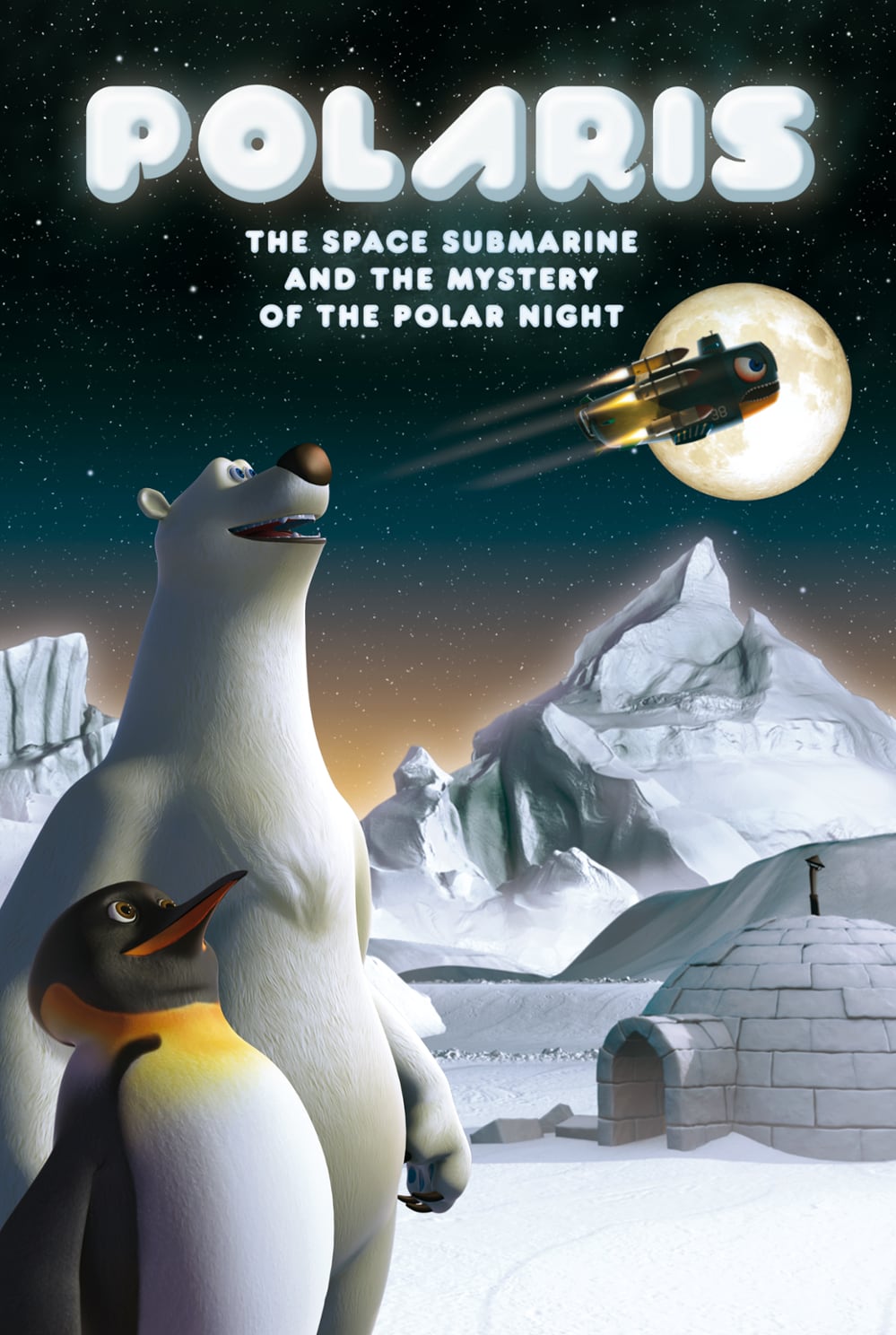
James, a traveling penguin from the South Pole, and Vladimir, a funny bear from the North Pole, meet on the Arctic sea ice. They become friends, talk about their respective regions and observe the stars together, wondering why the night is so long at the poles of the Earth. Novice astronomers, they are trying to solve this mystery by reasoning and observation.
Thanks to the rigor of James and the inventive genius of Vladimir, their scientific adventure leads them to build an observatory and then an improvised spaceship. During a trip around the Earth, extended to Mars and Saturn, they get their answer and discover that the planets have similarities but also differences. (30 minutes) View Trailer
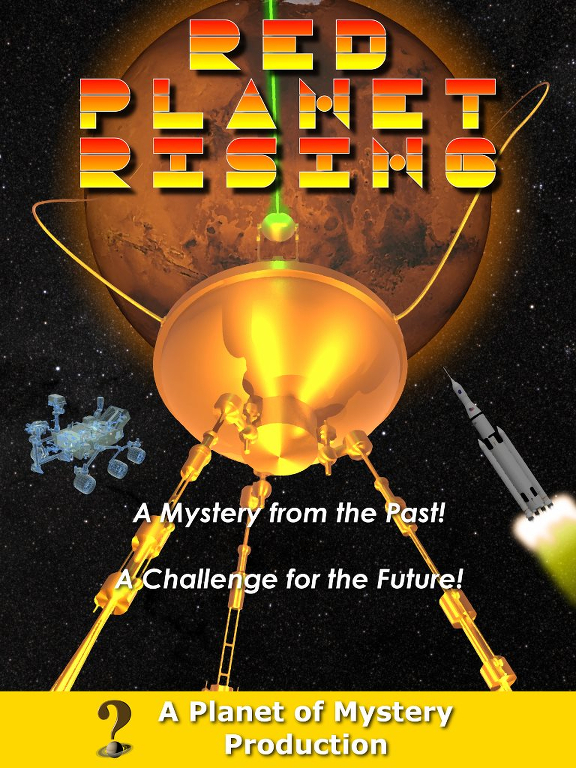
We'll explore Mars and mankind's fascination with this world through mythology, history, literature, movies, TV and science. We'll also look ahead to see what Mars may hold for mankind in the future.
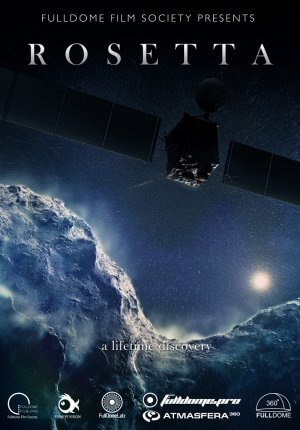
This unique fulldome show dedicated to a breakthrough discovery and space mission to the core of the comet 67P. Join the comet discoverer Klim Churyumov in the story about the origins of the Solar System and life on Earth. Meet the challenges of a 10 year long mission with Rosetta spacecraft and the “Philae” lander. Become the first one to find oneself on the comet surface!
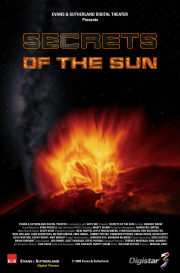
An intimate look at the role the sun plays in the life of our Solar System. From the nuclear forces churning at the heart of the sun to the mass ejections of solar material into the surrounding space, we will experience the power of the sun and its impact on the planets and ultimately life on Earth. We will trace the life cycle of the sun itself, going back to its beginnings and moving forward in time to its eventual death. (20 minutes)
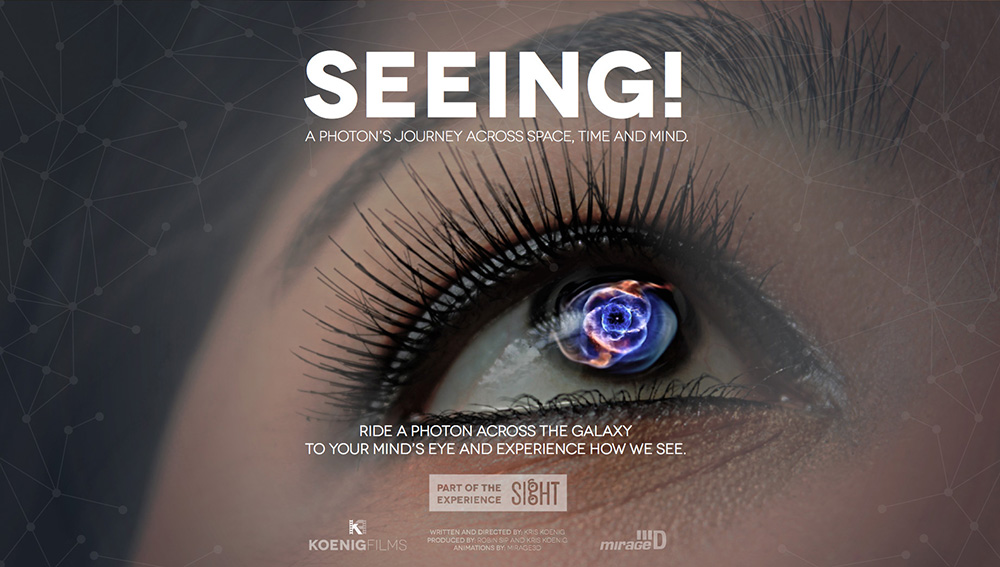
Ride a photon across the galaxy to your mind's eye and experience how we see. Seeing! follows a photon’s creation and journey across the galaxy to a young stargazer’s eye. The viewer followsthe photon into the girl’s eye, learning the structures of the eye and their functions, prior to taking a ride on the optic nerve. Seeing uses hemispheric 2D animations and video to teach how human vision works. Imagery from all over the world including humanity, landscapes, skyscapes, wildlife and of space will be the backdrop for photo-realistic animations, which will be used to create a story of a photons’ journey through the eye and its conversion to an electro-chemical impulse that then travels the neuro pathways of the brain to the various centers that create the image the brain sees. Narrated by Neil deGrasse Tyson.
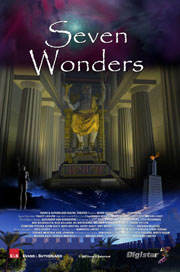
Turn back the pages of time and witness the ancient wonders of the world as they appeared thousands of years ago. Travel to Egypt to visit the Lighthouse of Alexandria and the Great Pyramids, to Persia to see the original Mausoleum, to Babylon to explore the fabled Hanging Gardens, to Greece to tour the Temples of Zeus and Artemis, and to Rhodes to stand in the shadow of the towering Colossus. We will investigate the theories of how these wonders were created, and get a glimpse of some of the universe's greatest wonders. (20 minutes) View Trailer
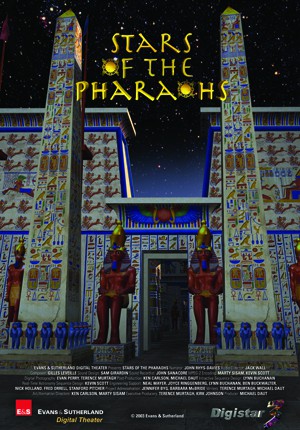
Travel to ancient Egypt to see how science was used to tell time, make a workable calendar, and align huge buildings. You'll learn about the connection the ancient Egyptians felt with the stars and various astronomical phenomena. And thanks to the time Digital Theater's production team spent on location in Egypt taking photographs and measurements, you'll see some of the most spectacular temples and tombs of the ancient world recreated in their original splendor. (40 minutes) View Trailer
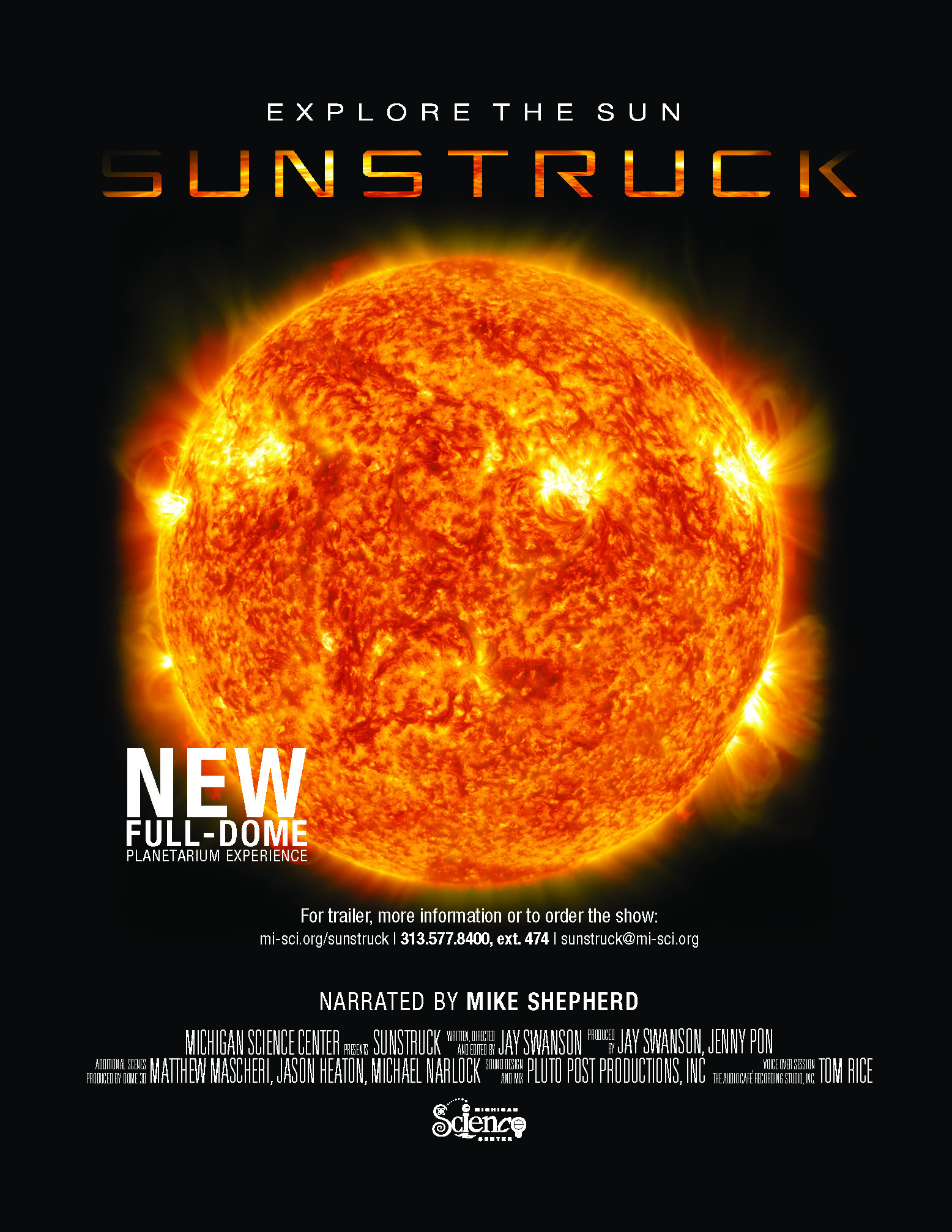
Explore the sun in all its glory in this fulldome show. Sunstruck takes us on a journey to discover the wonders of our magnificent star and investigate how it has supported life on Earth for millennia. This program includes information on the structure of the sun, the source of its energy, and how solar activity impacts our world. Located in the center of our solar system, our Sun is an average star. Learn about its mass, gases, temperatures and energy… and its fate in the far distant future. (21 minutes) View Trailer
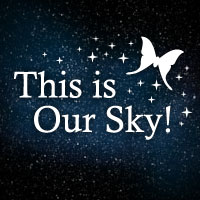
This is Our Sky! is a general astronomy show that targets 3rd grade, with elements of interest spanning Preschool to 6th Grade. Join Luna and her friends for an exploration of the sky, phases of the Moon, seasons, constellations, and planets. This show covers topics including: horizon, apparent motion of the sky, phases of the moon, seasons, constellations, and the solar system. (20 minutes) View Trailer
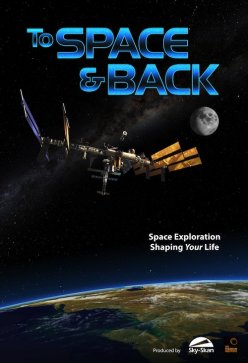
Space exploration — our greatest adventure — is having a big impact on our lives. It’s helping us to discover a universe of unimaginable scale and beauty, and it’s reaching down into our world and influencing the way we live. To Space and Back takes audiences on an incredible journey from the far reaches of our known universe to our own planet. It is an extraordinary story of human ingenuity and incredible engineering, describing how the technology that transports us through space is paving the way for the devices and apps we use every day. What’s happening above is coming back down to Earth! Discover how we’ve been changed by space exploration, and what we owe to curiosity and the spirit of discovery. (25 minutes) View Trailer
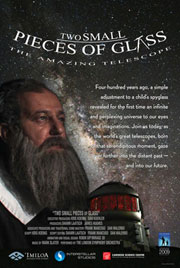
While attending a local star party, two students learn how the telescope has helped us understand our place in space and how telescopes continue to expand our understanding of the Universe. Their conversation with a local astronomer enlightens them on the history of the telescope and the discoveries these wonderful tools have made. The students see how telescopes work and how the largest observatories in the world use these instruments to explore the mysteries of the universe. While looking through the astronomer's telescope, the students, along with the planetarium audience, explore the Galilean Moons, Saturn's rings, and spiral structure of galaxies. During their conversation with the astronomer, they also learn about the discoveries of Galileo, Huygens, Newton, Hubble and many others. Engaging and appealing to audiences of all ages, Two Small Pieces of Glass traces the history of the telescope from Galileo's modifications to a child's spyglass-using two small pieces of glass-to the launch of NASA's Hubble Space Telescope and the future of astronomy. It explores the wonder and discovery made by astronomers through out the last 400 years. (30 minutes)
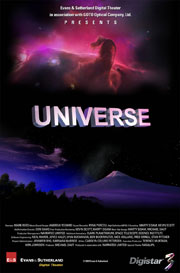
A historical look at how we have envisioned the universe though the ages. We visit some of the ancient sites where our ancestors erected great structures with special astronomical significance. Finally we look at the universe through the eyes of today's science and space explorers to build up a spectacular overview of the heavens. (20 minutes)

Learn the Art of Polynesian Navigation! Wayfinders: Waves, Winds & Stars is an entirely live-action fulldome film that tells the 5,000 year story of voyaging in the Pacific and teaches the ancient navigation techniques used aboard the legendary canoe Hōkūle‘a (23 minutes).
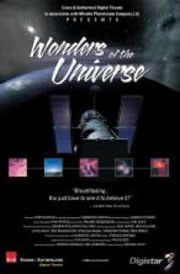
Peer deep into space through the eyes of the orbiting Hubble Space Telescope and travel back billions of years in time to witness the birth of the universe. On this breathtaking excursion you'll witness the formation of galaxies and explore some of the most wondrous nebulae and astronomical structures yet discovered. As your travels continue, you'll fly deep into our own Milky Way galaxy and return home to Earth on a spectacular tour through the solar system. Also available in Spanish. (20 minutes) View Trailer
